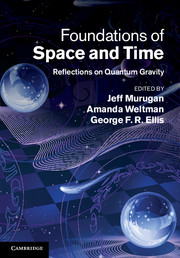Book contents
- Frontmatter
- Contents
- List of contributors
- 1 The problem with quantum gravity
- 2 A dialogue on the nature of gravity
- 3 Effective theories and modifications of gravity
- 4 The small-scale structure of spacetime
- 5 Ultraviolet divergences in supersymmetric theories
- 6 Cosmological quantum billiards
- 7 Progress in RNS string theory and pure spinors
- 8 Recent trends in superstring phenomenology
- 9 Emergent spacetime
- 10 Loop quantum gravity
- 11 Loop quantum gravity and cosmology
- 12 The microscopic dynamics of quantum space as a group field theory
- 13 Causal dynamical triangulations and the quest for quantum gravity
- 14 Proper time is stochastic time in 2D quantum gravity
- 15 Logic is to the quantum as geometry is to gravity
- 16 Causal sets: discreteness without symmetry breaking
- 17 The Big Bang, quantum gravity and black-hole information loss
- 18 Conversations in string theory
- Index
1 - The problem with quantum gravity
Published online by Cambridge University Press: 05 August 2012
- Frontmatter
- Contents
- List of contributors
- 1 The problem with quantum gravity
- 2 A dialogue on the nature of gravity
- 3 Effective theories and modifications of gravity
- 4 The small-scale structure of spacetime
- 5 Ultraviolet divergences in supersymmetric theories
- 6 Cosmological quantum billiards
- 7 Progress in RNS string theory and pure spinors
- 8 Recent trends in superstring phenomenology
- 9 Emergent spacetime
- 10 Loop quantum gravity
- 11 Loop quantum gravity and cosmology
- 12 The microscopic dynamics of quantum space as a group field theory
- 13 Causal dynamical triangulations and the quest for quantum gravity
- 14 Proper time is stochastic time in 2D quantum gravity
- 15 Logic is to the quantum as geometry is to gravity
- 16 Causal sets: discreteness without symmetry breaking
- 17 The Big Bang, quantum gravity and black-hole information loss
- 18 Conversations in string theory
- Index
Summary
“The effort to understand the Universe is one of the very few things that lifts human life a little above the level of farce, and gives it some of the grace of tragedy.”
Steven Weinberg, The First Three Minutes, 1997After almost a century, the field of quantum gravity remains as difficult, frustrating, inspiring, and alluring as ever. Built on answering just one question – How can quantum mechanics be merged with gravity? – it has developed into the modern muse of theoretical physics.
Things were not always this way. Indeed, inspired by the monumental victory against the laws of Nature that was quantum electrodynamics (QED), the 1950s saw the frontiers of quantum physics push to the new and unchartered territory of gravity with a remarkable sense of optimism. After all, if nothing else, gravity is orders of magnitude weaker than the electromagnetic interaction; surely it would succumb more easily. Nature, it would seem, is not without a sense of irony. For an appreciation of how this optimism eroded over the next 30 years, there is perhaps no better account than Feynman's Lectures on Gravitation. Contemporary with his epic Feynman Lectures on Physics, these lectures document Feynman's program of quantizing gravity “like a field theorist.” In it he sets out to reverse-engineer a theory of gravity starting from the purely phenomenological observations that gravity is a long-range, static interaction that couples to the energy content of matter with universal attraction.
- Type
- Chapter
- Information
- Foundations of Space and TimeReflections on Quantum Gravity, pp. 1 - 7Publisher: Cambridge University PressPrint publication year: 2012



